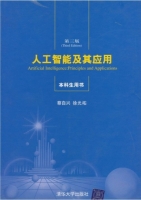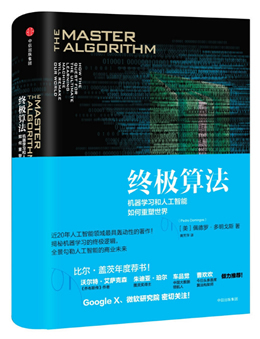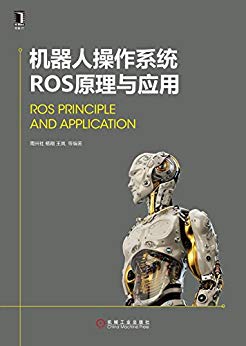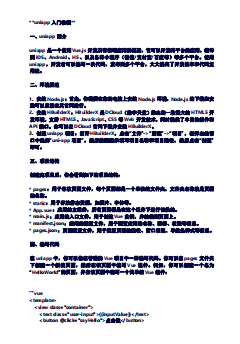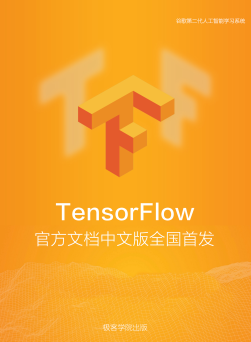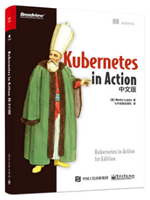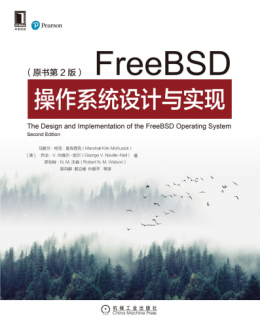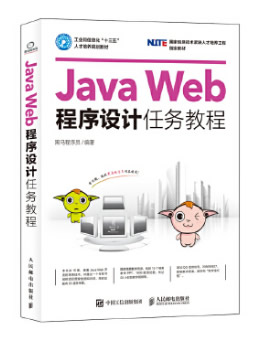《人工智能(一种现代的方法第3版影印版》(作者拉塞尔、诺维格)是“大学计算机教育国外有名教材系列”之一,是高等院校本科生和研究生人工智能课的教材。全书仍分为八大部分:分“人工智能”,第二部分“问题求解”,第三部分“知识与推理”,第四部分“规划”,第五部分“不确定知识与推理”,第六部分“学习”,第七部分“通信、感知与行动”,第八部分“结论”。《人工智能(一种现代的方法第3版影印版》适合于不同层次和领域的研究人员及学生。
目录
- Ⅰ artificial intelligence
- 1 introduction
- 1.1what is al?
- 1.2the foundations of artificial intelligence
- 1.3the history of artificial intelligence
- 1.4the state of the art
- 1.5summary, bibliographical and historical notes, exercises
- 2 intelligent agents
- 2.1agents and environments
- 2.2good behavior: the concept of rationality
- 2.3the nature of environments
- 2.4the structure of agents
- 2.5summary, bibliographical and historical notes, exercises
- Ⅱ problem-solving
- 3 solving problems by searching
- 3.1problem-solving agents
- 3.2example problems
- 3.3searching for solutions
- 3.4uninformed search strategies
- 3.5informed (heuristic) search strategies
- 3.6heuristic functions
- 3.7summary, bibliographical and historical notes, exercises
- 4 beyond classical search
- 4.1local search algorithms and optimization problems
- 4.2local search in continuous spaces
- 4.3searching with nondeterministic actions
- 4.4searching with partial observations
- 4.5online search agents and unknown environments
- 4.6summary, bibliographical and historical notes, exercises
- 5 adversarial search
- 5.1games
- 5.2optimal decisions in games
- 5.3alpha-beta pruning
- 5.4imperfect real-time decisions
- 5.5stochastic games
- 5.6partially observable games
- 5.7state-of-the-art game programs
- 5.8alternative approaches
- 5.9summary, bibliographical and historical notes, exercises
- 6 constraint satisfaction problems
- 6.1defining constraint satisfaction problems
- 6.2constraint propagation: inference in csps
- 6.3backtracking search for csps
- 6.4local search for csps
- 6.5the structure of problems
- 6.6summary, bibliographical and historical notes, exercises
- Ⅲ knowledge, reasoning, and planning
- 7 logical agents
- 7.1knowledge-based agents
- 7.2the wumpus world
- 7.3logic
- 7.4propositional logic: a very simple logic
- 7.5propositional theorem proving
- 7.6effective propositional model checking
- 7.7agents based on propositional logic
- 7.8summary, bibliographical and historical notes, exercises
- 8 first-order logic
- 8.1representation revisited
- 8.2syntax and semantics of first-order logic
- 8.3using first-order logic
- 8.4knowledge engineering in first-order logic
- 8.5summary, bibliographical and historical notes, exercises
- 9 inference in first-order logic
- 9.1propositional vs. first-order inference
- 9.2unification and lifting
- 9.3forward chaining
- 9.4backward chaining
- 9.5resolution
- 9.6summary, bibliographical and historical notes, exercises
- 10 classical planning
- 10.1 definition of classical planning
- 10.2 algorithms for planning as state-space search
- 10.3 planning graphs
- 10.4 other classical planning approaches
- 10.5 analysis of planning approaches
- 10.6 summary, bibliographical and historical notes, exercises
- 11 planning and acting in the real world
- 11.1 time, schedules, and resources
- 11.2 hierarchical planning
- 11.3 planning and acting in nondeterministic domains
- 11.4 multiagent planning
- 11.5 summary, bibliographical and historical notes, exercises
- 12 knowledge representation
- 12.1 ontological engineering
- 12.2 categories and objects
- 12.3 events
- 12.4 mental events and mental objects
- 12.5 reasoning systems for categories
- 12.6 reasoning with default information
- 12.7 the intemet shopping world
- 12.8 summary, bibliographical and historical notes, exercises
- Ⅳ uncertain knowledge and reasoning
- 13 quantifying uncertainty
- 13.1 acting under uncertainty
- 13.2 basic probability notation
- 13.3 inference using full joint distributions
- 13.4 independence
- 13.5 bayes' rule and its use
- 13.6 the wumpus world revisited
- 13.7 summary, bibliographical and historical notes, exercises
- 14 probabilistic reasoning
- 14.1 representing knowledge in an uncertain domain
- 14.2 the semantics of bayesian networks
- 14.3 efficient representation of conditional distributions
- 14.4 exact inference in bayesian networks
- 14.5 approximate inference in bayesian networks
- 14.6 relational and first-order probability models
- 14.7 other approaches to uncertain reasoning
- 14.8 summary, bibliographical and historical notes, exercises
- 15 probabilistic reasoning over time
- 15.1 time and uncertainty
- 15.2 inference in temporal models
- 15.3 hidden markov models
- 15.4 kalman filters
- 15.5 dynamic bayesian networks
- 15.6 keeping track of many objects
- 15.7 summary, bibliographical and historical notes, exercises
- 16 making simple decisions
- 16.1 combining beliefs and desires under uncertainty
- 16.2 the basis of utility theory
- 16.3 utility functions
- 16.4 multiattribute utility functions
- 16.5 decision networks
- 16.6 the value of information
- 16.7 decision-theoretic expert systems
- 16.8 summary, bibliographical and historical notes, exercises
- 17 making complex decisions
- 17.1 sequential decision problems
- 17.2 value iteration
- 17.3 policy iteration
- 17.4 partially observable mdps
- 17.5 decisions with multiple agents: game theory
- 17.6 mechanism design
- 17.7 summary, bibliographical and historical notes, exercises
- V learning
- 18 learning from examples
- 18.1 forms of learning
- 18.2 supervised learning
- 18.3 leaming decision trees
- 18.4 evaluating and choosing the best hypothesis
- 18.5 the theory of learning
- 18.6 regression and classification with linear models
- 18.7 artificial neural networks
- 18.8 nonparametric models
- 18.9 support vector machines
- 18.10 ensemble learning
- 18.11 practical machine learning
- 18.12 summary, bibliographical and historical notes, exercises
- 19 knowledge in learning
- 19.1 a logical formulation of learning
- 19.2 knowledge in learning
- 19.3 explanation-based learning
- 19.4 learning using relevance information
- 19.5 inductive logic programming
- 19.6 summary, bibliographical and historical notes, exercis
- 20 learning probabilistic models
- 20.1 statistical learning
- 20.2 learning with complete data
- 20.3 learning with hidden variables: the em algorithm.
- 20.4 summary, bibliographical and historical notes, exercis
- 21 reinforcement learning
- 21. l introduction
- 21.2 passive reinforcement learning
- 21.3 active reinforcement learning
- 21.4 generalization in reinforcement learning
- 21.5 policy search
- 21.6 applications of reinforcement learning
- 21.7 summary, bibliographical and historical notes, exercis
- VI communicating, perceiving, and acting
- 22 natural language processing
- 22.1 language models
- 22.2 text classification
- 22.3 information retrieval
- 22.4 information extraction
- 22.5 summary, bibliographical and historical notes, exercis
- 23 natural language for communication
- 23.1 phrase structure grammars
- 23.2 syntactic analysis (parsing)
- 23.3 augmented grammars and semantic interpretation
- 23.4 machine translation
- 23.5 speech recognition
- 23.6 summary, bibliographical and historical notes, exercis
- 24 perception
- 24.1 image formation
- 24.2 early image-processing operations
- 24.3 object recognition by appearance
- 24.4 reconstructing the 3d world
- 24.5 object recognition from structural information
- 24.6 using vision
- 24.7 summary, bibliographical and historical notes, exercises
- 25 robotics
- 25.1 introduction
- 25.2 robot hardware
- 25.3 robotic perception
- 25.4 planning to move
- 25.5 planning uncertain movements
- 25.6 moving
- 25.7 robotic software architectures
- 25.8 application domains
- 25.9 summary, bibliographical and historical notes, exercises
- VII conclusions
- 26 philosophical foundations
- 26.1 weak ai: can machines act intelligently?
- 26.2 strong ai: can machines really think?
- 26.3 the ethics and risks of developing artificial intelligence
- 26.4 summary, bibliographical and historical notes, exercises
- 27 al: the present and future
- 27.1 agent components
- 27.2 agent architectures
- 27.3 are we going in the right direction?
- 27.4 what if ai does succeed?
- a mathematical background
- a. 1complexity analysis and o0 notation
- a.2 vectors, matrices, and linear algebra
- a.3 probability distributions
- b notes on languages and algorithms
- b.1defining languages with backus-naur form (bnf)
- b.2describing algorithms with pseudocode
- b.3online help
- bibliography
- index


